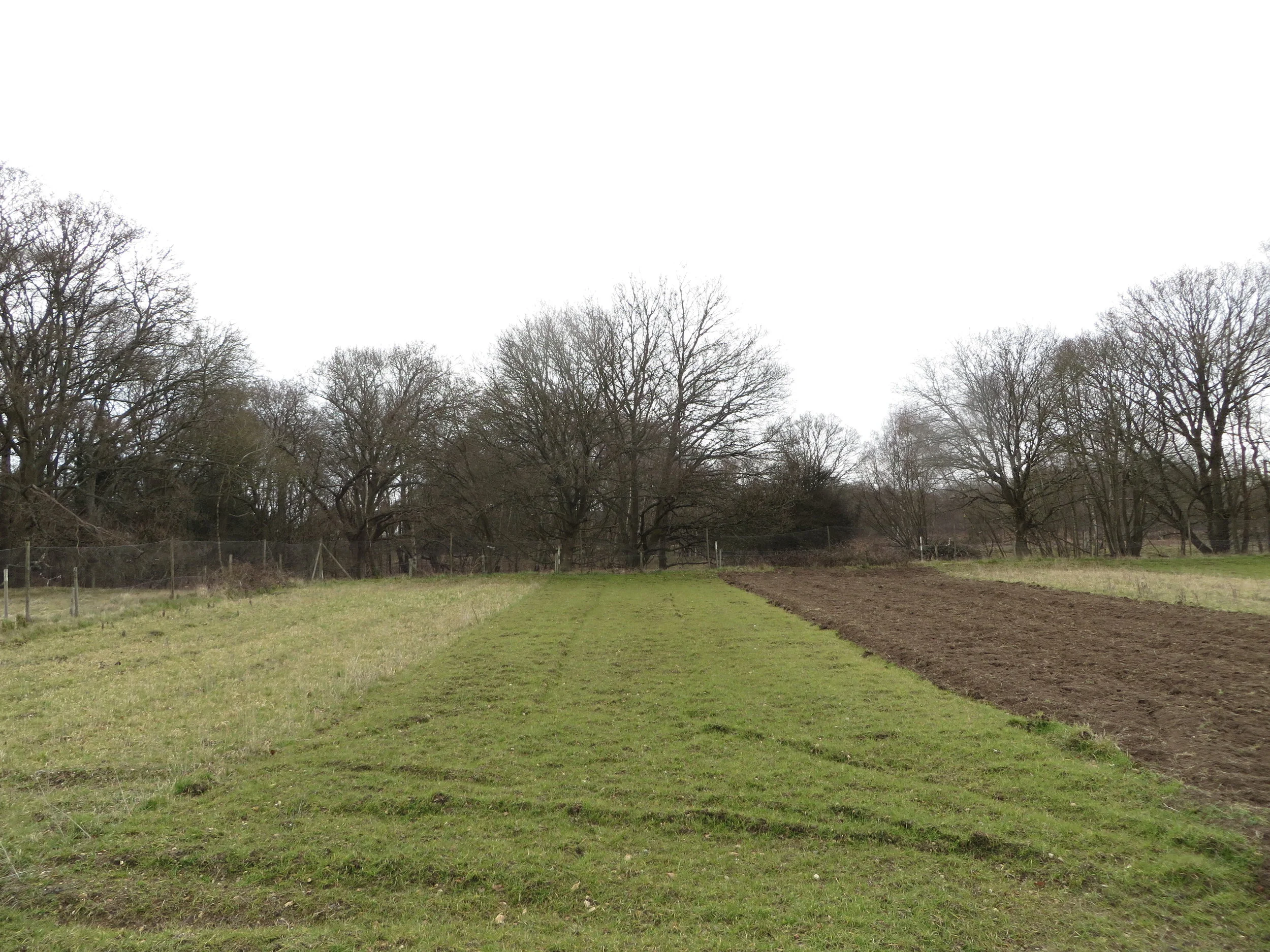march 2016: from left to right, cultivation strips ploughed in may, October & march
Background
Established in 1992, the Pound Hill experiment looks at how the timing of soil disturbance affects grasslands biomass and species composition.
Plant community composition is determined by many factors, one of which is seedling recruitment - the process by which new individuals are added to the existing population - and this in turn depends on seed germination and seedling survival.
Optimal conditions for germination differ between species, therefore variations in the timing and severity of disturbance should have an effect on the abundance of plant species and the composition of the seed bank.
Experimental Design
Pound Hill lies on acid, sandy soil of the Bagshot Series and is surrounded by naturally regenerated alder woodland.
Four blocks of 36 x 36 m are separated from the surrounding area by a rabbit proof fence. Within each block there are three plots measuring 36 x 8m. The disturbance treatments are applied in March, May or October, with the disturbance being the cutting of vegetation followed by rotavation of the ground to smooth soil.
In 1996, 1999 and 2002 all plots were treated with herbicide after the annuals seed production to control for perennial grass species. In 2002-2003 the whole experiment was split in half and all plots were cultivated at the same time. The eastern part of each plot was ploughed and rotovated in autumn 2002, and the western half of each plot in spring 2003.
On all other years up to 2016 cultivation treatments have been as planned in March, May or October. No other treatment is applied to the experiment.
Results To Date
Data has been collected on above-ground standing biomass or percentage cover of each plant species present in all plots.
The long-term cultivation and soil disturbance at different times of the year has resulted in very different plant communities among the three types of cultivation treatments.
The abundance of most species is typically highest in the disturbance regime that best matches their germination behaviour. Autumn cultivation favours species whose seedlings can survive through winter and thus have a head start the following spring. March cultivation selects for species that need cold temperatures to flower in spring and whose seedlings resist frost. Finally, species that flower after exposure to frost and grow fast are favoured under the May cultivation, as this regime exposes seedlings to short growing seasons with often dry environmental conditions (Crawley, 2004).
Further Information and Data Availability
This experiment has been maintained with the support of the Department of Life Sciences at Imperial College London. Please visit the Imperial College website for further information.
Make a request to view metadata via the Google Drive.



